Part Time Course
Total of 40 weeks of tuition
Deposit = £200
Cost = £975 per term (3 terms per course)
Limited to 10 Students
£200.00
5 in stock
Part Time Course
Total of 40 weeks of tuition
Deposit = £200
Cost = £975 per term (3 terms per course)
Limited to 10 Students
5 in stock
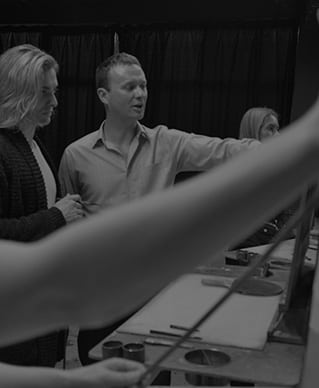
Academy Portrait Painting Course 2024/25
Take your skills to the next level this year and learn the traditional techniques of classical realist art. The portrait painting course will teach you tried and tested methods going back to the Renaissance.
Cost £2950 (deposit £200)
Timetable
One years academic studies 2024-2025
Saturdays 9.30-4.30
Total of 40 weeks tuition
1st Term
14th Sep – 19th Oct | Half Term | 2nd Nov – 21st Dec 2024
Christmas Break
2nd Term
4th Jan – 8th Feb | Half Term | 22nd Feb – 12th April 2025
Easter Break
3rd Term
26th April – 24th May | Half Term | 7th June – 19th July 2025
Colour
The Portrait Painting Course is divided into two parts. The first part is Tone, the second part is Colour. The second part of the programme will focus on the theory and practical application of colour. We will be exploring the Full Colour Palette which lends itself well to the Alla Prima style of painting, giving it a fresh vibrant look.
The study of masterpieces is the quickest way to develop a visual vocabulary. During this term we will be looking at some of the modern masters of the Alla Prima technique to help us deal with the complexities of the full palette.
Through studying the masters and applying what we have learned we can start to develop our own style as a portrait artist.
Tutor
Louis Smith is a classically trained portrait painter who studied in Florence for three years. A painter of bespoke portraits he undertakes various commissions ranging from individuals through to families and professionals. To see some examples of his work go to louissmithart.com
Daily Schedule
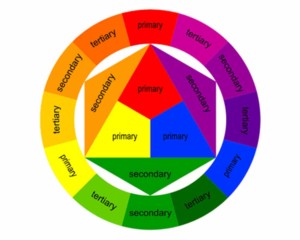
Lesson
Lesson = Understanding Colour. Hue, chroma and value explained. Deeper knowledge of complimentary colour and colour temperature.
Exercise = Colour wheel, mixing secondary and tertiary colours from primary colours. Mixing flesh tones, high chroma – low chroma, warm and cool.
Model = No Model.
Homework = Practice colour mixing exercises.
Outcome
Students will learn:
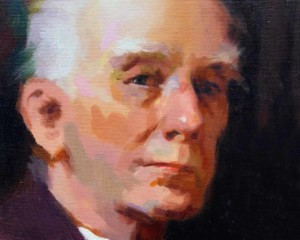
Lesson
Lesson = Richard Shmid is a modern day master of Alla Prima portraits, the aim of this study is to emulate his loose high chroma style.
Exercise = Study a Richard Schmid portrait painting observing the use of colour, strokes and accuracy.
Model = Apply what we have learned with the Model.
Homework = Study Richard Shmid Portrait. Paint a portrait in similar style either sitter or photo reference.
Outcome
Students will learn:
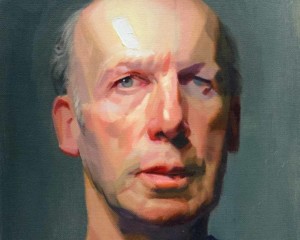
Lesson
Lesson = This Lesson is designed to push the boundaries of colour by assimulating Richard Shmid’s approach to capturing the variety of colour in the face.
Exercise = Study observing the local colours of the face and exaggerated colour mixing.
Model = Referance of Paul.
Homework = Repaint the study to see how much you remember.
Outcome
Students will learn:
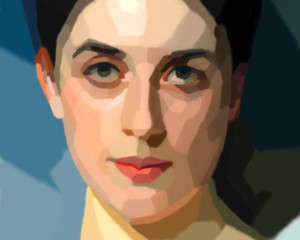
Lesson
Lesson = John Singer Sargent master copy. Now we are starting to refine the colours of the face by copying Sargents lowere chroma colours.
Exercise = Break down the portrait in to simple planes of hue, chroma and value used by Sargen
Model = Lady Agnew portrait.
Homework = Repeat the exercise with another master copy.
Outcome
Students will learn:
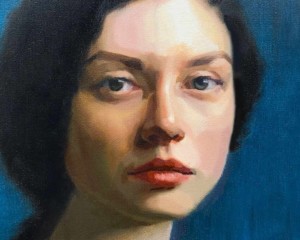
Lesson
Lesson = This lesson is designed to observe and describe the subtlety of colour and tonal relationships by assimulating Sargents approach.
Exercise = Lower the chroma and maintin the planes to describe the form of the face.
Model = Referance of a young girl..
Homework = Repeat the exercise.
Outcome
Students will learn:
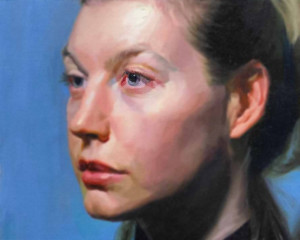
Lesson
Lesson = Softening edges, still observing the planes of the face but refining the variety of edges as when rendering each plane.
Exercise = Observing the variety of edges of each plane ranging from sharp to soft.
Model = Using a portrait model and reference.
Homework = Work on the portrait in their own time.
Outcome
Students will learn:
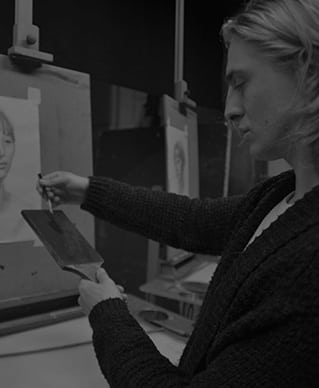
Tone
The tone part of the Portrait Painting Course is divided into two parts, drawing and tone.
Drawing
The secret to a successful painting is measuring tone and colour in that order.
First we start with the Sight Size technique which is copying the reference like for like. Once we are comfortable with this measuring technique we then progress to comparative measurements based on proportional units of measurement, this method is used when observing the model from a distance.
Tone
The next step is tone, we will be learning how to observe and describe 3-dimensional form without the distraction or complexity of colour.
Simplification is key, we start by using the model of the Asaro head as an armature to break down the features of the face into simple geometric planes. Training the eye to accurately compare the tonal relationships of each plane is crucial to painting a convincing portrait.
All images below are taken from Louis Smiths demonstrations in front of the class when delivering each lesson.
Daily Schedule
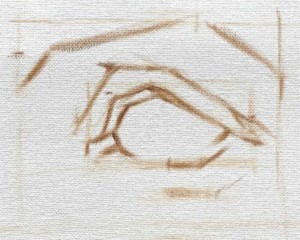
Lesson
Lesson = Students learn how to measure using the Sight Size method, learning how to map the features of the face.
Exercise = Students work from Charles Bargue master copies, then apply this method to the drawing of each feature.
Model = Charles Bargue master copies and photo references of the features.
Homework = Articulate the features of the face.
Outcome
Students will learn:
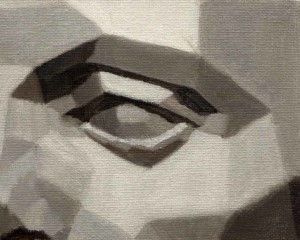
Lesson
Lesson = We will be using the Asaro head as an armature to simplify the features into geometric planes.
Exercise = Learning how to observe and describe form using a step by step process.
Model = Asaro Eye, nose and mouth reference.
Homework = Repeat the steps in class.
Outcome
Students will learn:
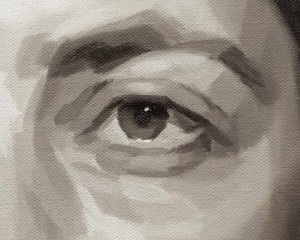
Exercise = Breaking down the form of the eye, nose, mouth and ear into simple planes.
Model = Eye, nose, mouth and ear references.
Homework = Repeat the steps in class.
Outcome
Students will learn:
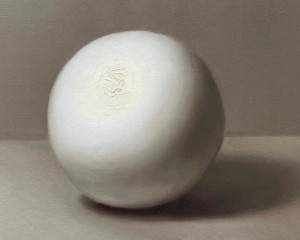
Lesson
Lesson = Understanding the anatomy of light, breaking down the form into its separate tones of highlight, halftone, shadow and cast shadow.
Exercise = Follow the steps listed to illustrate the form of a sphere.
Model = Polystyrene, ball, square and cylinder.
Homework = Repeat the steps in class to illustrate the form of a cylinder.
Outcome
Students will learn:
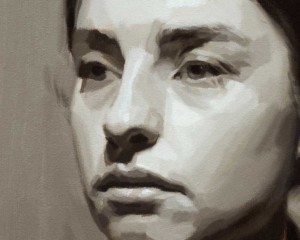
Lesson
Lesson = Put all the main features together to form the triangle of the face. An accurate portrayal of the eyes nose and mouth is important to produce a recognisable face.
Exercise = Working big to small, starting with overall form of head then the features.
Model = Photo reference.
Homework = Practice this technique by painting the head from a different angle.
Outcome
Students will learn:
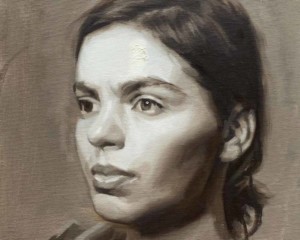
Exercise = Follow the 23 step guide.
Model = Photo reference.
Homework = Repeat all the steps with a different reference photo.
Outcome
Students will learn:
09 Customer(s) recommended this item
‘I have just finished the part time portrait painting program 2022-2023 at Realist Academy with Louis Smith. The course is well structured and takes you step by step through each stage so you gradually learn and understand the techniques that are essential to create beautiful portraits.Louis is a brilliant artist and he’s very generous in sharing his knowledge with his students. Louis always knows where you are in the painting process and how to take you to the next step and gives very informative demonstrations.I began the course as a beginner but finished a much more proficient artist, having gained knowledge and skills it would have taken me years to develop on my own.’ Alina H.
I have just completed the 1 year portraiture course at the Realist Academy and I have really enjoyed it. Under Louis’ expert tutelage my portraits have improved tremendously and although the course is very structured, it is delivered in a relaxed and friendly atmosphere in a well equipped studio. The homework set each week was an essential opportunity to practice at home the skills learned in class, followed by constructive criticism by Louis in the studio. I would highly recommend this course to anyone who wishes to improve their painting skills, beginners or experienced artists alike. Lynne Forshaw
“Before I started the course I was unhappy with the standard of my work. However after a year training with Louis (who is a highly skilled individual) I am pleased to see an improvement in my technical abilities and the quality of my work has improved.I highly recommend the in studio approach, it is invaluable to improve, as the tutor is there to point out where you are going wrong instantly, instead of taking hours or weeks trying to figure things out on your own. The principles and steps which Louis teaches helps to instil a structured, methodical way to painting. You won’t find a better foundation to Portrait painting in the North of England than at The Realist Academy.”Adrian Beamish
As a self-taught artist I had been mulling over taking this course for over 6 years – the time commitment was holding me back.
I am so glad that I cleared space and committed to the class, I thrive with in-person tuition and this course was disciplined, taking me through all the technical fundamentals that being self taught I simply didn’t have.
I’ve been fascinated by portraiture since a teenager however my attempts (in pastels and pencils) have been inconsistent, some ok, some most definitely not ok!
Thanks to Louis’s tuition I now understand the fundamentals and can apply them to my art – my portraiture has improved 100% and is now of a consistently high standard, so m much so that I am now taking commissions.
Like all courses you get out what you put in and you need to be prepared to not only go to all the lessons but also to set aside enough time to complete the homework too which can be up to a day.
The only reason I marked down the venue was the fact that it’s a bit of a trek to the loos and for a few months they were closed (we had access to another one further away) on good days this is no issue but in winter… not so fun.
Top tip – wear a name badge, Louis is rubbish at remembering names! lol
This is one of the paintings I completed towards the end of the class – I’m really proud of it!
You must be logged in to post a review.
Hi Su, thanks for the feedback. Yes unfortunately the toilets are out of my control as Walton Hall is run by Warrington Council so things take time to resolve.
Thanks Louis